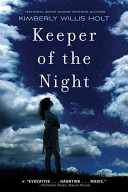by Monique Storie, University of Guam
 One of the themes that intrigued me when I was doing my dissertation on Chamorro literature was the idea of simplicity that emerged from the teachers’ comments. Anthropological research reveals Chamorros have a complex network of reciprocal arrangements that binds the community together (Thompson, 1969, de Valle, 1978). My own experience has taught me that being Chamorro is far from simplistic. We have an intricate maze of relations that we must know and be able to navigate within (e.g. which person should be greeted first, second, and so on, when entering a room full of relatives). Coming from these contexts, comments like “Chamorros are simple people” really stand out.
One of the themes that intrigued me when I was doing my dissertation on Chamorro literature was the idea of simplicity that emerged from the teachers’ comments. Anthropological research reveals Chamorros have a complex network of reciprocal arrangements that binds the community together (Thompson, 1969, de Valle, 1978). My own experience has taught me that being Chamorro is far from simplistic. We have an intricate maze of relations that we must know and be able to navigate within (e.g. which person should be greeted first, second, and so on, when entering a room full of relatives). Coming from these contexts, comments like “Chamorros are simple people” really stand out.
So, why is “simplicity” important? Up until the 1950s, the Mariana Islands were still primarily an agrarian society. Families shared harvests and fishing catches with their extended family, kin, and community. People sat on their porches in the evenings, sharing stories with relatives and songs with neighbors. Simple lifestyles helped to establish the bonds that were important to community. With modernization came technology that encouraged (and continues to encourage) individualism. Today, parents try to balance the allure of modern technology with weekend trips to the beach, boonie stomping, or family gatherings where cousins can interact. Thus, “simplicity” is a connection to the region’s past identity and the preference for a more-down-to earth lifestyle.
The Chamorro sense of simplicity does not have a formal spiritual tone such as the zen-like or contemplative quality found in some Asian cultures. That formal tone within Chamorro society tends to be connected to Catholic rituals, such as annual village fiestas and rosaries, which are by no means simple. Instead, the idea of simplicity is usually tied into a modest lifestyle or down-to-earth perspective. For example, the family in Evelyn Flores’ Dolphin Day (1988) drives pickup trucks and jeeps, go off-roading, and spend time at the beach. The children have zoris (aka slippers or flip-flops) on their feet while their stateside cousin wears sneakers to the beach. In Duendes Hunter (Flores, 1988), the story begins with a little girl in shorts, t-shirt and zoris running out the door before anyone can stop her. Throughout the story, the little girl tries to get as close to the different animals she encounters as possible, even if it means she ends up in the mud. In Blessed Ties (Dooley, 2007), when Typhoon Karen destroys their homes and threatens Christmas, the neighborhood children find joy in fixing up old toys for their younger brothers and sisters and in wrapping empty boxes for the parents and older siblings to unwrap on Christmas day.
Within the adolescent literature, this down-to-earth simplicity is subtly carried out through “the little things.” In my research, the teachers admiredKeeper of the Night’s Teresita— a tomboy who enjoyed the sport of cockfighting— because she was willing to adapt (i.e. becoming a fiesta queen) when circumstances required it but kept her true identity of an unpretentious girl from the south. In “Resurfacing” (found in Tanya Chargualaf Taimanglo’s Attitude 13: A Daughter of Guam’s Collection of Short Stories) Maya’s jeep is filled with zoris, shorts, and other beach necessities and the way she carries herself suggests she lives for outdoor adventures. Similarly, in “By Any Other Name,” when Antonia reminisces about her grandmother’s house, her mind settles on the box of white envelopes her grandmother kept for funerals. Plain white envelopes filled with ikka’ (a small monetary donation) and signed with the person’s name are more common than store-bought sympathy cards to express sympathy and support to the deceased’s family. Each of these representations shows various ways in which Chamorros try to keep their lives simple and emphasize people over things.
Chamorros live a dichotomous lifestyle. On the one hand, children are trained to know the complex networks of their family. On the other, they are encouraged to enjoy a simple life by going on backyard adventures, playing with cousins, and trying not to “keep up with the Joneses” especially as the reliance on technology grows. At the heart of it, Chamorros value this down-to-earth attitude because it encourages interest in how others are doing which helps in maintaining the individual relationships that are central to the Chamorro culture.
References
Taimanglo, Tanya Chargualaf. (2010). Attitude 13: a daughter of Guam’s collection of short stories. California: Guam Books and Beads; Bloomington, IN: Authorhouse.
Valle, Therese del. (1979). Social and cultural change in the community of Umatac, Southern Guam. Mangilao, GU: Micronesian Area Research Center.
Dooley, Maria. (2007). Blessed ties. Illustrated by Anita Dimalanta Bendo. Guam: Maria Borja Dooley.
Flores, Evelyn. (1988). Dolphin day, Illustrated by Vivian Lujan Bryan. Guam: Green Island Publishers.
Flores, Evelyn. (1988). Duendes hunter, Illustrated by Vivian Lujan Bryan. Guam: Green Island Publishers.
Holt, Kimberly Willis. (2003). Keeper of the night. New York: Dell Laurel Leaf.
Thompson, Laura. (1969). Guam and its people. Westport, CT: Greenwood Press.
Please visit wowlit.org to browse or search our growing database of books, to read one of our two on-line journals, or to learn more about our mission.
Journey through Worlds of Words during our open reading hours: Monday-Friday, 9 a.m. to 5 p.m. and Saturday, 9 a.m. to 1 p.m. To view our complete offerings of WOW Currents, please visit archival stream.
- Themes: Chamorro, Monique Storie
- Descriptors: Books & Resources, WOW Currents
